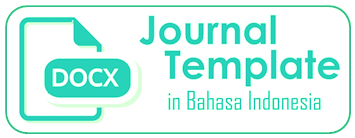Five Step Communication Planning Strategy in Building Community Awareness about Household Waste Management
Keywords:
Communication Strategy, Communication Planning, Household wasteAbstract
The increasing number of inhabited housing encourages the volume of waste to increase due to increased household consumption. Likewise, on Jalan ANUGRAH GANG JELITA, RT 10, MAKMUR JAYA VILLAGE, SATU DISTRICT, TANAH BUMBU REGENCY, WHERE THIS PHENOMENON ALSO HAPPENED. The management of household waste by the surrounding community is still relatively low. The results of preliminary observations and interviews show that there is still a low level of public awareness of disposing of waste in official landfills and the low role of the community in supporting government programs related to household waste management. This study aims to build awareness and concern for the community in the prosperous village of Satui sub-district, Tanah Spice district in managing household waste. Communication strategy is carried out using a five-step communication planning model. The results of this study indicate that changes in personal communication behavior are more influential than mass communication. Mass communication can be used to increase knowledge, but behavior change is more influential when personal communication is used. In addition, the community has also begun to realize the importance of maintaining cleanliness and managing household waste, such as separating waste by type and disposing of waste in official disposal sites.
Downloads
References
Arifin, Anwar. 2003. “Komunikasi Politik”. (Jakarta: Balai Pustaka, 2003).
Azzahra, T. A. (2020). Menteri LHK: Timbunan Sampah di Indonesia Tahun 2020 Capai 67,8 Juta Ton. Detik News.
Brunner, P. H., dan Rechberger, H. (2016). Handbook of Material Flow Analysis: For Environmental, Resource, and Waste Engineers.
Cangara, Hafied. 2014. “Perencanaan dan strategi komunikasi”. Jakarta: Rajawali Press.
Chandra, Budiman. 2006. “Pengantar Kesehatan Lingkungan”. EGC. Jakarta Subekti I. (2009)
Damanhuri, Enri dan Padmi, Tri . 2010. “Pengelolaan Sampah Edisi Semester I – 2010/2011”. Bandung: Program Studi Teknik Lingkungan Fakultas Teknik Sipil dan Lingkungan Institut Teknologi Bandung.
Daryanto, Suprihatin. 2013. “Pengantar Pendidikan Lingkungan Hidup”. Yogyakarta : Gava Media, 2013.
Emzir. (2010). “Metode Penelitian Kualitatif Analisis Data”. Jakarta: Raja Grafindo.
Fajar, Marhaeni. 2009. “Ilmu Komunikasi: Teori dan Praktek”. Yogyakarta: Graha Ilmu.
Iskandar. (2009). “Metode Penelitian Kualitatif”. Jakarta: Gaung Persada.
Purnaweni, H. (2014). “Kebijakan Pengelolaan Lingkungan di Kawasan Kendeng Utara Provinsi Jawa Tengah”. Jurnal Ilmu Lingkungan, 12(1), 53–65.
Ruslinda, Yenni. 2011. Studi Timbulan, Komposisi dan Karakteristik Sampah Domestik Kota Bukittinggi. Jurnal Teknik Lingkungan UNAND. Vol.9, Hal. 1-12.
Undang-Undang Republik Indonesia Nomor 18 Tahun 2008.





